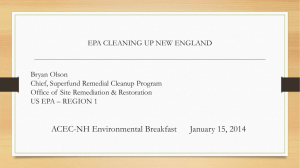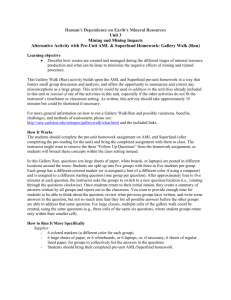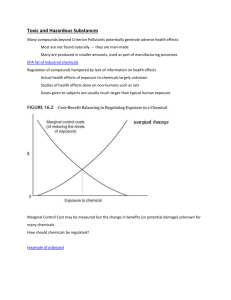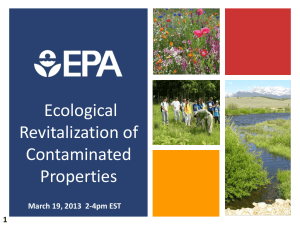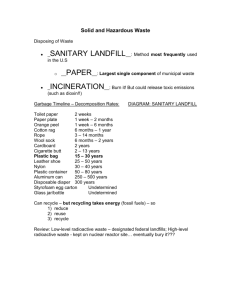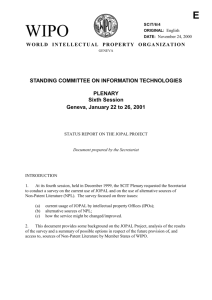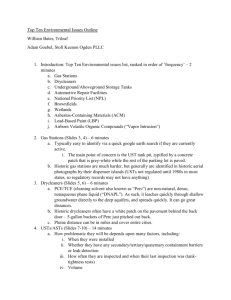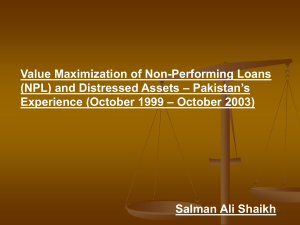Human`s Dependence on Earth`s Mineral Resources Unit 3 Mining
advertisement
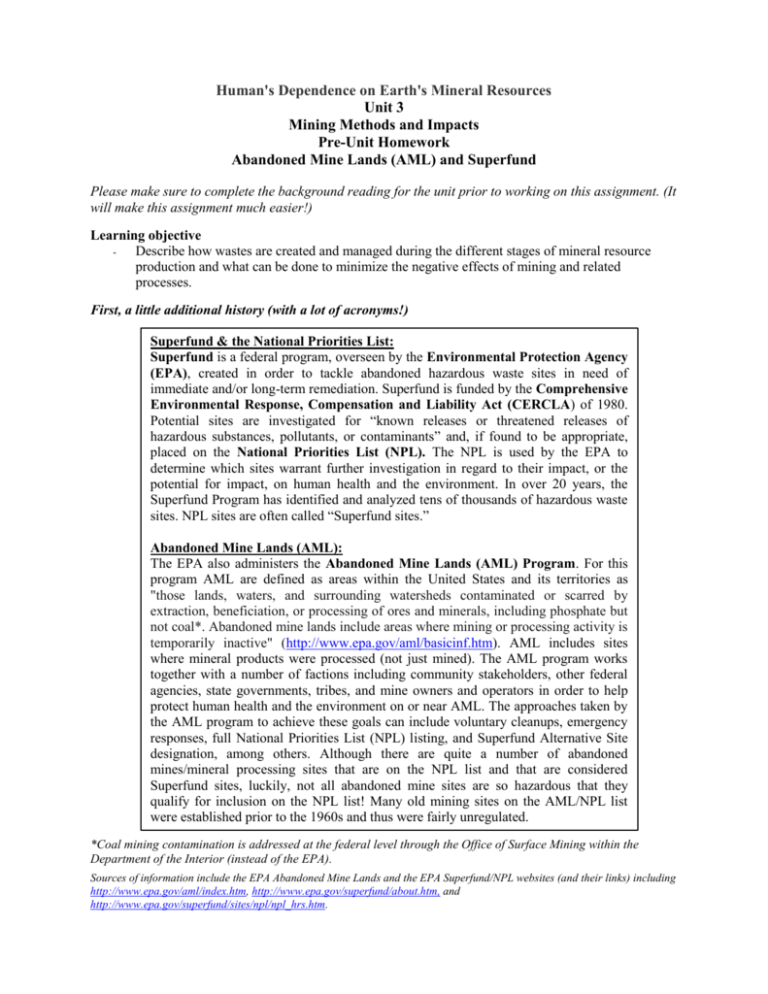
Human's Dependence on Earth's Mineral Resources Unit 3 Mining Methods and Impacts Pre-Unit Homework Abandoned Mine Lands (AML) and Superfund Please make sure to complete the background reading for the unit prior to working on this assignment. (It will make this assignment much easier!) Learning objective Describe how wastes are created and managed during the different stages of mineral resource production and what can be done to minimize the negative effects of mining and related processes. First, a little additional history (with a lot of acronyms!) Superfund & the National Priorities List: Superfund is a federal program, overseen by the Environmental Protection Agency (EPA), created in order to tackle abandoned hazardous waste sites in need of immediate and/or long-term remediation. Superfund is funded by the Comprehensive Environmental Response, Compensation and Liability Act (CERCLA) of 1980. Potential sites are investigated for “known releases or threatened releases of hazardous substances, pollutants, or contaminants” and, if found to be appropriate, placed on the National Priorities List (NPL). The NPL is used by the EPA to determine which sites warrant further investigation in regard to their impact, or the potential for impact, on human health and the environment. In over 20 years, the Superfund Program has identified and analyzed tens of thousands of hazardous waste sites. NPL sites are often called “Superfund sites.” Abandoned Mine Lands (AML): The EPA also administers the Abandoned Mine Lands (AML) Program. For this program AML are defined as areas within the United States and its territories as "those lands, waters, and surrounding watersheds contaminated or scarred by extraction, beneficiation, or processing of ores and minerals, including phosphate but not coal*. Abandoned mine lands include areas where mining or processing activity is temporarily inactive" (http://www.epa.gov/aml/basicinf.htm). AML includes sites where mineral products were processed (not just mined). The AML program works together with a number of factions including community stakeholders, other federal agencies, state governments, tribes, and mine owners and operators in order to help protect human health and the environment on or near AML. The approaches taken by the AML program to achieve these goals can include voluntary cleanups, emergency responses, full National Priorities List (NPL) listing, and Superfund Alternative Site designation, among others. Although there are quite a number of abandoned mines/mineral processing sites that are on the NPL list and that are considered Superfund sites, luckily, not all abandoned mine sites are so hazardous that they qualify for inclusion on the NPL list! Many old mining sites on the AML/NPL list were established prior to the 1960s and thus were fairly unregulated. *Coal mining contamination is addressed at the federal level through the Office of Surface Mining within the Department of the Interior (instead of the EPA). Sources of information include the EPA Abandoned Mine Lands and the EPA Superfund/NPL websites (and their links) including http://www.epa.gov/aml/index.htm, http://www.epa.gov/superfund/about.htm, and http://www.epa.gov/superfund/sites/npl/npl_hrs.htm. What do you need to do? For this assignment, you will read about one of these actual AML/NPL sites, fill in a table, and answer some questions. Steps: Select an AML/NPL site (you may have already done this). Write the information below. Go to the website: http://www.epa.gov/aml/amlsite/npl.htm and locate your AML/NPL site. Click on the link to read about your site and complete the table (next page). Search a little offsite, as necessary, to help understand the information (i.e., unfamiliar terms or health problems associated with certain contaminants, etc.). Once your table is finished, please answer the questions that follow. Some helpful hints: The summaries you write for the table should be only about 2–3 sentences long. Most information should be readily available on your website’s opening page or by clicking the link on the right side called “More In-Depth Site Details (EPA Regional Content).” o If different ways exist to access pertinent information about your particular site, then they were mentioned on the sign-up sheet (“Info Assess Details”). Even more acronyms and some additional helpful terminology: OU is “operating unit” and refers to a step in the assessment/cleanup plan. HRS is Hazard Ranking System. PRP is “potentially responsible party.” Sites that are listed as “Proposed” have been recommended for inclusion on the NPL and have completed an HRS, but have not yet been approved for placement on the NPL. Final sites are sites that have been accepted (or “added into”) the NPL. Deleted sites are those for which further response is no longer necessary. “Superfund Alternate Sites” are long-term remediation sites that would qualify for listing on the NPL but go through a slightly different pathway because there is a PRP who might pay for the cleanup. Your Selected Site: Site Name: EPA Region #: State: Access Info (if any): By the way, you can use this website (http://www.epa.gov/superfund/sites/npl/where.htm) to search where you live (or where you’d like to move to in the future) to see if there are any Superfund sites nearby. Complete the following table and answer the follow-up questions. Site name & EPA Region Number Site location (County & State) Date proposed to NPL Date added (made “Final”) to NPL, if any Type(s) of miningrelated process(es) (i.e. refining, mining, processing, leaching, etc.) Desired mineral resource(s), if given Contaminant(s) of concern Brief description/summary of environmental, health, and/or safety threats Brief summary of actions taken to access and/or clean up so far Date of final cleanup action or deletion from the NPL, or note if the project is still under consideration or ongoing Follow up questions: 1) There are approximately 130 sites on this AML/NPL list, although a few sites are only “proposed” as of yet. Millions of dollars go into the Superfund Program for assessments and cleanups, and many of these take years to complete. Provide at least two justifications/explanations for why these sites exist even when the folks that created them knew the products/wastes were toxic. 2) What incentives exist today in the United States that encourage businesses/individuals to not create similar hazardous sites? List and explain at least two. 3) When regulations to protect air, water, soil, and/or human health go into effect, there is often some amount of resistance to them, particularly from the industry involved and possibly from other local or regional stakeholders. Why is it important to enact appropriate regulations? What are some of the possible costs of enacting regulations? What are some of the possible costs of not enacting regulations?
